Today I will be reviewing the 2019 caiman by Safari Ltd. I was inspired to review this figure after it came up for my daily Museum post and all the exhaustive research I did on determining its identification. Let’s discuss the identification first, shall we? Safari Ltd. only marketed this figure as a caiman, mentioning both the genera Caiman and Melanosuchus on their website. When I first got it, I assumed it was a black caiman (Melanosuchus niger) because of the overall darker appearance (although color can change seasonally and during the course of a caiman’s lifespan). However, upon further research and discussion with other forum members, we concluded it better represents the spectacled caiman (C. crocodilus) or the yacare caiman (C. yacare). For my personal collection, I chose to have it represent C. yacare given the prominent blotches on the side of the body and jaw, which are more pronounced in adult C. yacare than C. crocodilus (although color can be highly variable across the complex (see below). Another reason I felt it doesn’t represent the black caiman is because M. niger is the largest extant member of the Alligatoridae, so one should expect the figure to be larger if Safari intended it to represent that species. I sent a PM to Doug Watson to see if he sculpted this figure and if so what species it was based on, but at the time of this writing I have yet to hear back. This is not the only caiman produced by Safari Ltd.; they included them in the Authentics Rainforest Creatures (late 1980s) and Rainforest TOOB (2006) collections, and M. niger was specifically represented in the 2021 South American Animals TOOB.
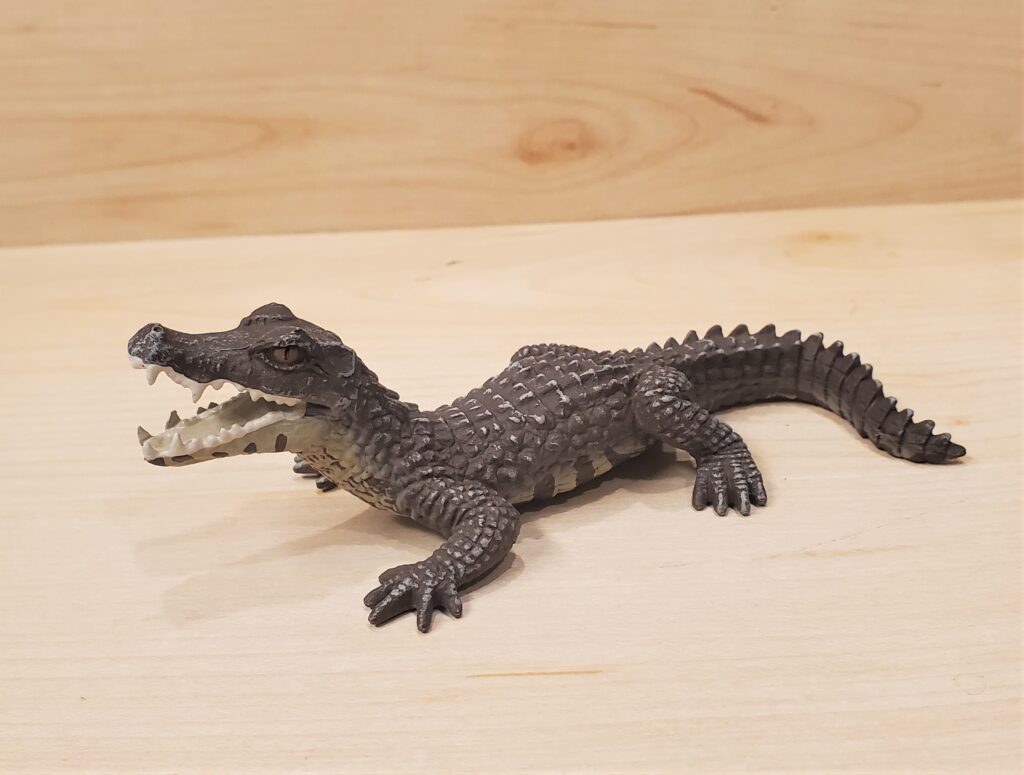
The taxonomy of the C. crocodilus complex is challenging. Caiman yacare has often been considered a subspecies of the C. crocodilus. Molecular studies show that the C. crocodilus complex consists of four evolutionarily significant units (ESUs) and that the Honduras population of the brown caimain (C. crocodilus fuscus) and C. yacare are unique and separate evolutionary lineages, having diverged from C. crocodilus about 6 mya and are considered geographically and reproductively isolated from C. crocodilus from the Orinoco and Amazon Basins. The Brazilian Shield, which forms most of the northern boundary of C. yacare’s distribution, causes the Río Madera constriction, an effective barrier to upstream migration of C. crocodilus from the north. While hybridization is possible at the very limited areas of contact between the two species, there has been no detectable genetic introgression. However, more work is needed to map the boundaries of caiman populations and to characterize their phlyogeography; contact zones between populations can prove valuable in resolving taxonomic relationships.
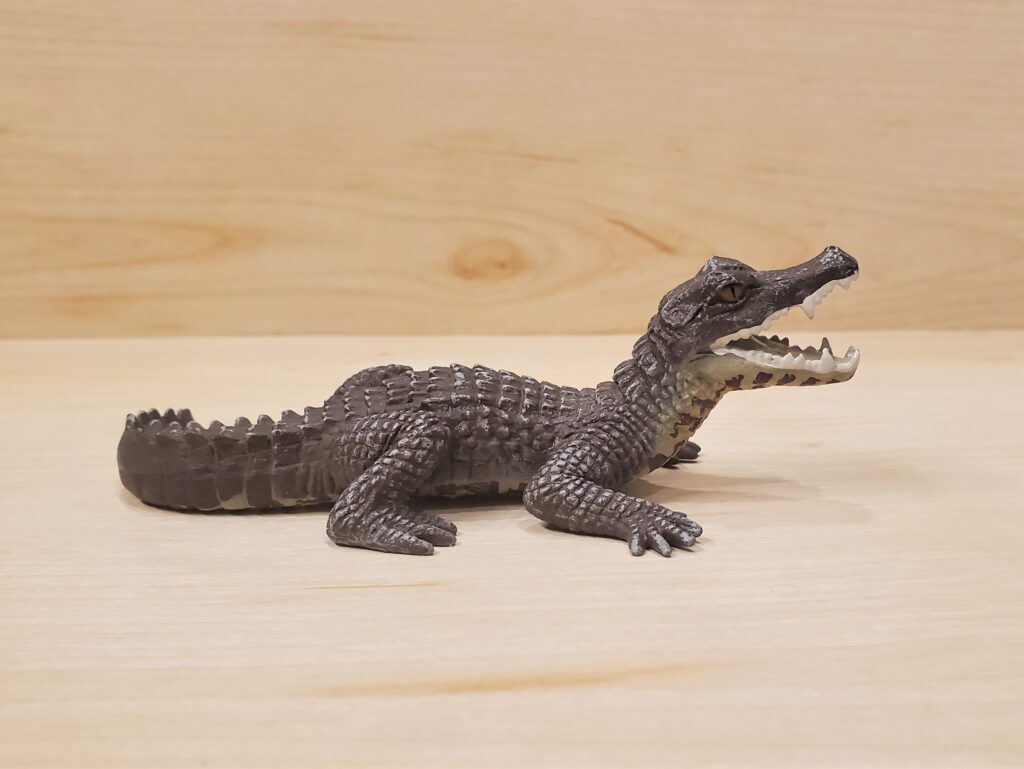
Regardless of the taxonomy, caimans are broadly distributed through the Neotropics, from Central America to central South America and the Caribbean. The spectacled caiman has also been naturalized in Puerto Rico, Cuba, and Florida, USA. They live in most freshwater habitats, including flooded forests, wetlands, and slow-moving rivers, and sometimes in brackish or saltwater environments. They are general carnivores and eat a wide variety of animal prey, including mammals, birds, turtles, snakes, mollusks, and aquatic insects.
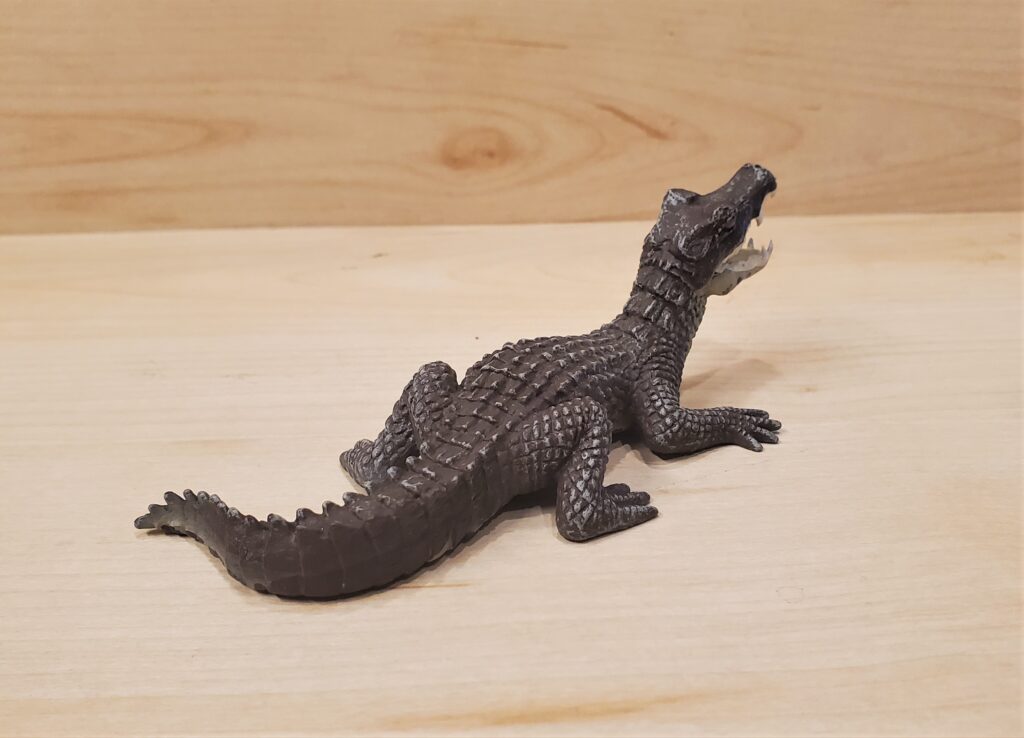
This caiman figure measures 12.0 cm across its widest points and measured along the midline is 15.0 cm for a scale of 1:10-1:14 for a member of the C. crocodilus-complex (including C. yacare).
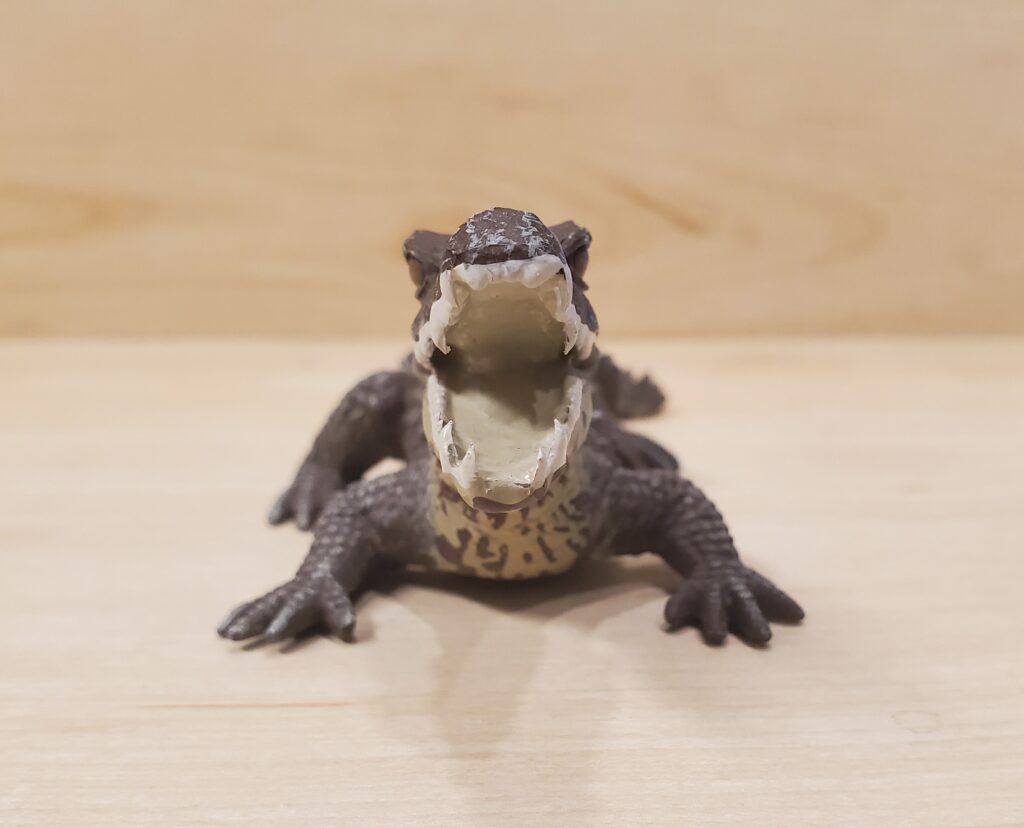
The sculpt is nothing short if fantastic. The animal sits as if basking on the back of a river, with its mouth open. The body is well textured, although it is missing the ridge between the eyes that is reminiscent of spectacles, hence the common name ‘spectacled’ caiman. I haven’t done a deep dive into caiman osteoderms, but I suspect the figure is fairly generic for a caiman. Teeth are individually sculpted and nice and sharp!
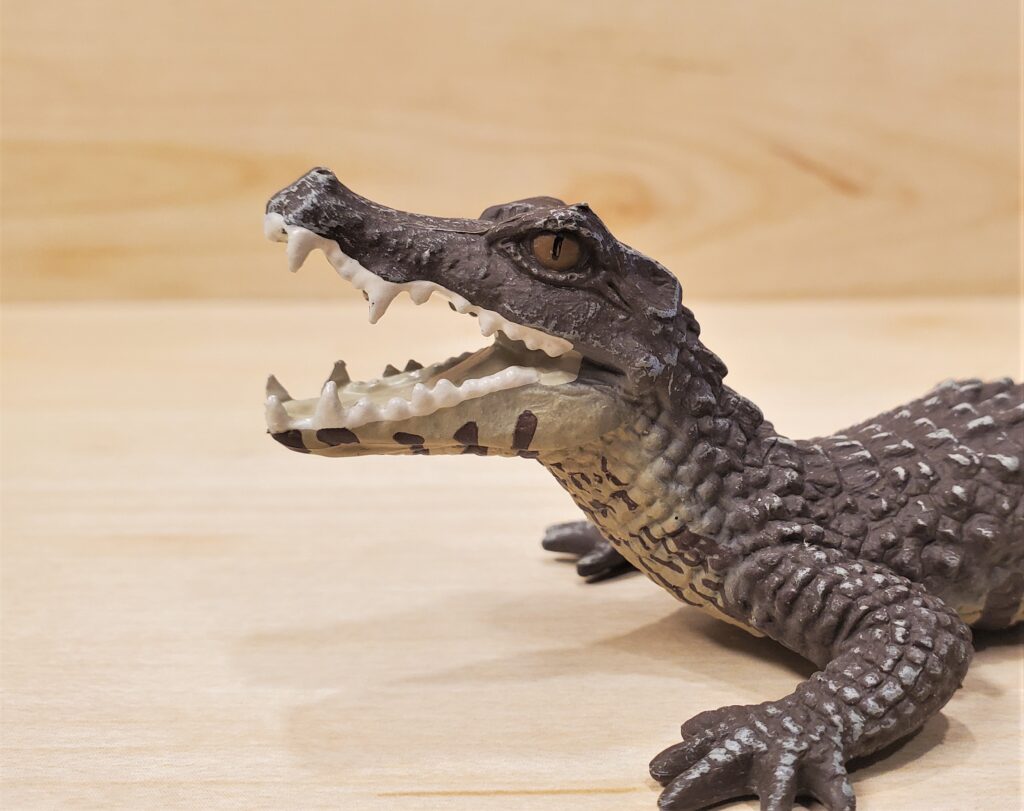
The base dorsal color is an olive-grey with light accents. The underside is a yellow-cream with dark olive-grey splotched. The splotches continue on the side of the mid-body, the lower jaw, and small areas of the tail (in many specimens, caimans often have a banded tail). Caimans are variable in their color, and as mentioned previously, can vary based on the age of the animal and season/temperature. As such, color alone is not a super helpful feature for species-level identification. It has also been suggested that this figure was painted after a juvenile specimen. Generally speaking, however, the blotches on the lower jar are more frequent with the yacare caiman rather than the spectacled caiman. The teeth are painted a cream-white and the eyes are amber with black pupil slits.
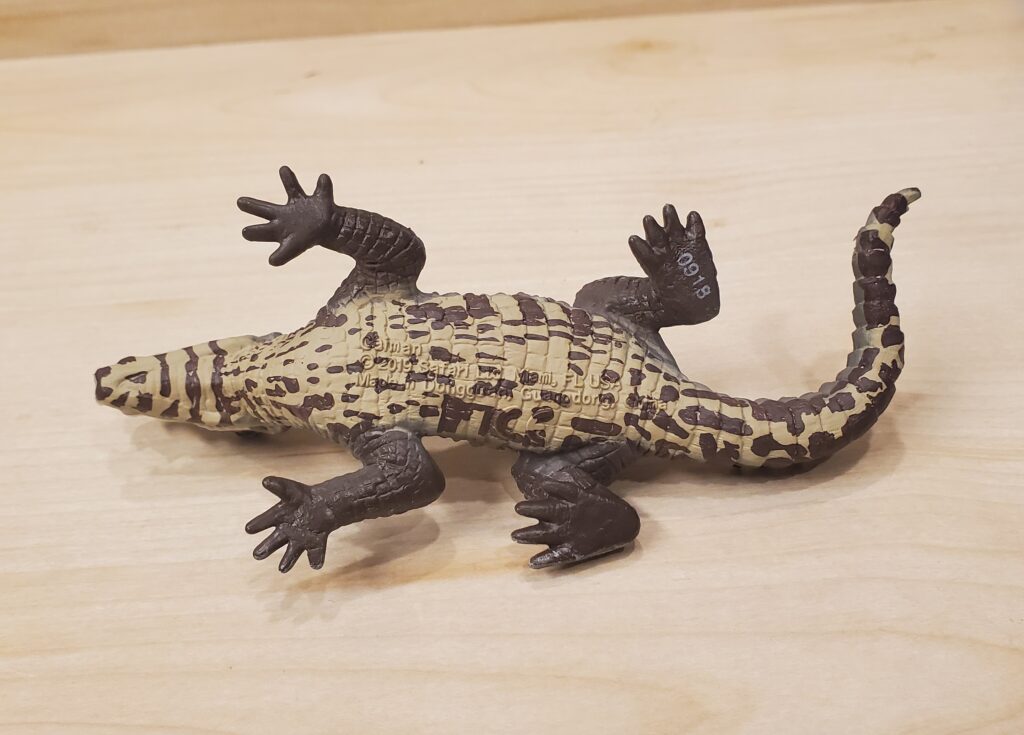
For a collector of interesting taxa, the Safari caiman comes recommended. If one wants caiman figures marketed at the species level, there are options for the black caiman (the aforementioned Safari TOOB, Trendmasters, and Play Visions), spectacled caiman (Kaiyodo Wild Rush and Kabaya), and Cuvier’s dwarf caiman (Play Visions). All of those are smaller and inline with TOOB/gashapon figures. To my knowledge, today’s Safari figure is the only ‘standard-sized’ caiman that is readily available.
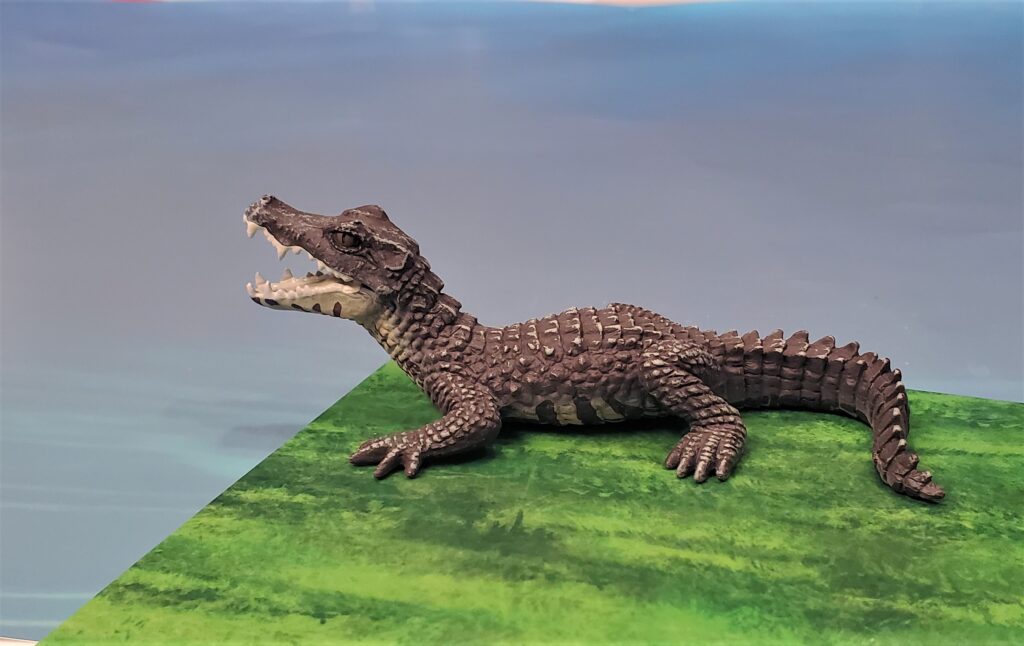
Disclaimer: links to Ebay and Amazon on the AnimalToyBlog are affiliate links, so we make a small commission if you use them. Thanks for supporting us!




Very informative review, it is frustrating when Safari doesn’t identify the species that their own figures represent. For some reason I was unaware of this figure before today.
It’s a pretty decent caiman, but I’d sure love to see someone make the black species.